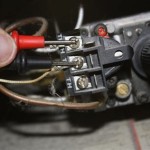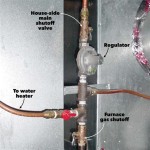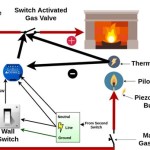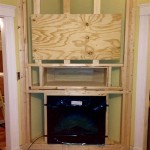Bats In Fireplace: A Comprehensive Guide to Identification, Removal, and Prevention
The discovery of bats in a fireplace can be a disconcerting experience for homeowners. Fireplaces, with their dark, sheltered spaces and access to the outdoors, can inadvertently become attractive roosting sites for bats. Understanding the reasons behind this phenomenon, the potential risks involved, and the appropriate steps to take for removal and prevention is crucial for maintaining a safe and healthy living environment.
Bats are nocturnal mammals that play a vital role in ecosystems as insectivores, pollinators, and seed dispersers. However, their presence in human dwellings can pose health and safety concerns. This article provides a comprehensive overview of the factors contributing to bat infestations in fireplaces, the potential dangers associated with their presence, and the humane and effective methods for managing these situations.
Identifying the Presence of Bats in a Fireplace
Determining whether bats are present in a fireplace often involves recognizing specific signs. One of the most telling indicators is the observation of bats themselves, either flying in and out of the chimney or roosting within the firebox. These sightings are typically more frequent during dusk and dawn, as bats are most active during these periods.
Another reliable sign is the presence of bat droppings, also known as guano. Guano is small, dark, and crumbly, often resembling rodent droppings but differing in composition. It typically accumulates near the fireplace opening or within the firebox. Unlike rodent droppings, guano consists mainly of insect exoskeletons and will crumble easily when touched. The accumulation of guano can also produce a distinctive, unpleasant odor.
Unusual scratching or fluttering sounds emanating from the chimney or firebox, particularly during the evening or early morning hours, can also signal the presence of bats. These sounds may be subtle but are often noticeable in quiet environments. Examining the surrounding area for grease marks or dark stains along the chimney opening or firebox walls is another useful identification method. These marks are caused by bats rubbing against the surfaces as they enter and exit the roost.
Finally, an ammonia-like odor emanating from the fireplace area can indicate a bat infestation. The accumulation of urine and droppings produces this distinct smell, which can become quite strong in enclosed spaces.
Risks Associated with Bats in Fireplaces
While bats are generally not aggressive, their presence in a home can pose several health and safety risks. One of the primary concerns is the potential for disease transmission. Bats can carry various pathogens, including rabies, histoplasmosis, and other less common diseases. Rabies is a viral disease that affects the central nervous system and can be fatal if left untreated. Although the incidence of rabies in bats is relatively low, any bat bite should be treated with immediate medical attention and post-exposure prophylaxis.
Histoplasmosis is a fungal infection that can develop when humans inhale fungal spores present in bat guano. The spores thrive in moist, nitrogen-rich environments such as accumulated bat droppings. Histoplasmosis primarily affects the lungs and can cause symptoms ranging from mild flu-like symptoms to severe respiratory illness. Individuals with compromised immune systems are at higher risk of developing severe complications.
Beyond disease transmission, the accumulation of bat guano can create unsanitary conditions and attract other pests, such as insects and rodents. Guano can also damage building materials, including wood, insulation, and drywall, due to its corrosive nature. The weight of accumulated guano can create structural problems over time.
Bats can also trigger allergic reactions in sensitive individuals. Exposure to bat dander, urine, or droppings can cause respiratory symptoms, skin irritation, and other allergic responses. The presence of bats can also create psychological distress and anxiety for homeowners, particularly those with phobias related to bats or concerns about potential health risks.
In addition to the health and sanitation risks, the mere presence of bats in a fireplace can pose a fire hazard. Bats can carry nesting materials into the chimney, potentially blocking the flue and increasing the risk of chimney fires when the fireplace is used. The accumulation of guano can also contribute to the buildup of creosote, a highly flammable substance that can ignite during fireplace use.
Humane Bat Removal and Exclusion Strategies
Effective bat removal and exclusion strategies prioritize the humane treatment of these animals while ensuring they do not re-enter the dwelling. The preferred time for bat exclusion is typically during the non-breeding season, usually from late summer to early spring, depending on the region. Excluding bats during the breeding season can result in young bats being trapped inside, leading to their death and creating additional problems.
One of the most common and effective exclusion methods is using a one-way exclusion device. These devices are designed to allow bats to exit the fireplace but prevent them from re-entering. They are typically made of netting, plastic sheeting, or specialized tubing and are installed over the primary entry point, such as the chimney opening. The device allows bats to squeeze through the opening when they leave but prevents them from flying back in.
Before installing a one-way exclusion device, it is essential to seal all other potential entry points into the house. This can be accomplished by caulking cracks, patching holes, and screening vents. Thoroughly inspecting the exterior of the house is crucial to identify all possible entry points. After installing the exclusion device, the bats will eventually leave the roost in search of food and will be unable to return. It is advisable to leave the device in place for at least a week to ensure that all bats have exited the fireplace.
Another commonly used method is to install a chimney cap. A chimney cap is a metal or mesh covering that fits over the top of the chimney, preventing bats, birds, and other animals from entering. Chimney caps also help to prevent rain, snow, and debris from entering the chimney, which can cause damage and reduce its efficiency. Choosing a durable and properly fitted chimney cap is essential for effective bat exclusion.
In some cases, professional bat removal services may be necessary. These services employ trained technicians who have experience in safely and humanely removing bats from buildings. They can assess the situation, identify entry points, and implement appropriate exclusion strategies. Professional bat removal services also typically provide cleanup and disinfection services to remove guano and other contaminants.
Preventing Future Bat Infestations
Preventing future bat infestations involves implementing measures to make the property less attractive to bats and to block their access to potential roosting sites. One of the most effective preventive measures is to seal all potential entry points into the house. This includes caulking cracks, patching holes in walls and roofs, and screening vents and openings. Regular maintenance of the building's exterior is essential to identify and address any new entry points that may develop over time.
Installing a chimney cap is also an important preventive measure. The chimney cap not only prevents bats from entering the chimney but also helps to keep out other animals, debris, and moisture. Ensure the chimney cap is properly installed and maintained to provide effective protection.
Maintaining a clean and well-ventilated attic and crawl space can help to deter bats from roosting in these areas. Addressing any moisture problems in these spaces is crucial, as bats are attracted to damp environments. Properly insulating these areas can also help to regulate temperature and humidity levels, making them less appealing to bats.
Turning off exterior lights can help to reduce the attraction of insects to the property, which in turn reduces the appeal to bats, as insects are their primary food source. Using motion-activated lights can also help to deter bats from approaching the house. Consider planting bat-repellent plants around the perimeter of the property. Some plants, such as eucalyptus, mint, and marigolds, are known to have properties that deter bats.
Regularly inspect the property for signs of bat activity, such as droppings or grease marks. Addressing any potential problems early can prevent a full-blown infestation. It is also important to educate household members about the signs of bat presence and the importance of taking preventive measures.
In conclusion, dealing with bats in a fireplace requires a thorough understanding of bat behavior, potential risks, and effective removal and prevention strategies. By taking appropriate measures, homeowners can protect their health and property while ensuring the humane treatment of these important creatures. Consulting with wildlife professionals or pest control experts can provide additional guidance and support in managing bat infestations.

Got Bats In Your Chimney Flue Full Service

La Z Boy Gulf Coast Designers Design Blog Marks Interiors

Bats In The Chimney What To Do Living Cavity

Decor With Diy Bats Musings By Madison

Bats In The Chimney How To Get Rid Of Remove

Bats In The Chimney How To Get Out Of

Fall Boho Bat Fireplace Display Delineate Your Dwelling

Are Those Birds Or Bats In My Chimney Tullahoma Tn A 1

Got Bats In Your Chimney Flue Full Service

Martha Moments Bats In Sarah S Belfry
Related Posts








